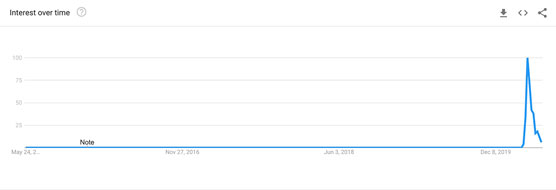 ©Daria Ahafonova/Shutterstock.com
©Daria Ahafonova/Shutterstock.comA very brief history of coronavirus
In late 2019, tens of thousands of Chinese citizens mysteriously contracted a severe respiratory illness and started dying. People with heart disease, diabetes, obesity, and generally weak immune systems were particularly susceptible to contracting it. Ultimately dubbed coronavirus, the outbreak quickly escalated to nightmarish proportions and every country in the world. On March 11, 2020, the World Health Organization did the inevitable and declared COVID-19 a global pandemic.Since that time and as of this writing, the numbers have been nothing short of grim: According to Johns Hopkins University, more than 400,000 people have died across the globe. Nearly three million others became infected but have since recovered. Epidemiologists almost unanimously agree that a second wave is coming in the fall of 2020.
When coronavirus hit the United States in earnest, it evoked images of the 1918 Spanish flu. To minimize the carnage and stress on their healthcare systems, state governments — some far more reluctantly than others — issued stay-at-home orders.
COVID-19 did not just leave more than 100,000 dead bodies in its wake. It wrought psychological, social, and economic devastation as well. With respect to the latter, tens of millions of Americans lost their jobs. U.S. unemployment spiked to nearly 15 percent in April 2020. Most workplaces, parks, restaurants, schools, retail stores, and places of worship closed. Musicians postponed concerts, comedians canceled shows, and professional sports as the world knows them ceased to exist.
Against this backdrop, hundreds of millions people needed to find new, virtual ways to work and, more than that, recapture some semblance of normalcy. In each case, Zoom was the most popular choice.
How COVID-19 changed Zoom’s trajectory
Starting in early February 2020, the company’s floodgates began to blow open. In a matter of weeks, oodles of businesses from mom-and-pop stores to large enterprises started getting Zoom religion. Examples of rapid Zoom adoption abounded during this unprecedented time. Here’s one of them.On March 19, 2020, California governor Gavin Newsom issued a stay-at-home order for his state’s citizens. As a result, thousands of California-based businesses needed to adapt to a new world — and fast. One such shop was Reeder Music Academy based in Danville, California. Within a week, the 28-employee company migrated roughly 70 percent of its classes online using — you guessed it —Meetings & Chat. Thousands of small businesses in just one state would have immediately shuttered were it not for affordable videoconferencing tools such as Zoom.
And Zoom adoption quickly spread to decidedly non-corporate environments. As but one example during the height of frenzy, teachers from more than 90,000 schools across 20 countries began educating their students from their homes via Meetings & Chat. Beyond professional reasons, people needed a way to connect with their family and friends. Again, Zoom answered the bell.
To say that Zoom’s user numbers exploded over a three-month period would be acme of understatement. By the end of March 2020, more than 200 million people participated in both free and paid Zoom meetings every day (Industry types refer to this number as daily active users, or DAUs.) By way of comparison, just four months earlier, Zoom had averaged approximately 10 million DAUs. The 2,000 percent increase was downright stupefying.
And Zoom’s user growth didn’t stop there.
During its first fiscal quarter of 2020 (ending on April 30), Zoom reported that its DAUs had climbed to 300 million — a 50 percent jump from only a month earlier. Many of those users decided to become proper customers. Company revenue in that quarter grew by an eye-popping 169 percent. Analyst Richard Valera of the asset-management firm Needham called the results “incredible.” (Read more about Zoom’s most recent financial results.)
Fast-forward a few weeks. As of June 2, 2020, Zoom’s market capitalization exceeded a staggering $58 billion. If you had bought Zoom stock just a few months earlier, you’d be ecstatic.
It wasn’t all puppy dogs and ice cream for Zoom, though. On the flip side, its viral consumer growth has led to some unexpected issues and a slew of bad press. For now, however, rest assured: Zoom’s management has taken its unforeseen challenges very seriously.
The double-edged sword of sudden, massive growth
Consider Amazon, Facebook, Google, eBay, Reddit, Uber, Airbnb, Twitter, Netflix, Craigslist, Nextdoor, and Zoom.What do they all have in common?
Many things. Most important here, though, one is that their founders weren’t following tried-and-true playbooks that guaranteed success. That is, it’s not like these folks were starting Subway or McDonald’s franchises circa 2012. As such, they understandably failed to think about every possible use — and misuse — of their products and services along the way.
From the onset, it’s essential to understand two things. First, Zoom is a not fundamentally insecure set of communications tools. Second, it is not a repeat privacy offender à la Facebook, Google, and Uber. Still, Zoom’s unprecedented growth unearthed some fundamental issues that its management and software engineers hadn’t considered, much less fully appreciated. You may have even heard of the most severe problem that the company has encountered to date.
Zoombombing
I often draw analogies and use metaphors to drive home my points, especially between Zoom communications and their brick-and-mortar counterparts. Here’s another one.Gordon is meeting with a group of Japanese investors in his office. Young buck Bud has weaseled his way into Gordon’s waiting room. (In case you’re curious, I’m referencing the 1987 film Wall Street. What can I say? I’m a cinephile.) After a while, Bud becomes impatient and storms into Gordon’s office. He starts screaming at Gordon about a high-stakes deal involving his father’s airline gone bad.
Think of Zoombombing as the digital equivalent of this scenario. Unknown and unwanted intruders entered countless Zoom meetings and started bothering participants and acting inappropriately. Think of it this way: For years, one of Zoom’s most valuable features was letting people quickly meet with others all across the globe. Within a few weeks, you could argue that that feature suddenly morphed into a bug.
Prior to March 2020, the term Zoombombing effectively didn’t exist. (To be fair, though, trolls have long crashed many other videoconferencing tools.) Don’t take my word for it, though. The figure displays a Google Trends graph that proves my point:
 Google Trends searches for Zoombombing over time.
Google Trends searches for Zoombombing over time.
Play around with Google Trends yourself.
General trends are certainly informative, but by definition they mask individual stories. Tales of rampant Zoombombing pervaded local and national media precisely because Zoom exploded. For example, on April 6, 2020, the New York City Department of Education cited Zoombombing in its decision to ban its schools from using Zoom for remote learning. A few days earlier, the Federal Bureau of Investigation (FBI) had issued a formal warning about criminals who were effectively hijacking classrooms across the country. A few litigious folks even filed lawsuits against Zoom.In hindsight, the advent and rise of Zoombombing stemmed from several interrelated factors.
By way of background, at the end of 2019, 10 million people regularly used Zoom’s suite of communication tools. As former Bloomberg Technology cohost Cory Johnson used to say on air, “That ain’t nothing.” The vast majority of these people qualified as enterprise customers. That is, they happily used Zoom to communicate with colleagues, partners, subordinates, vendors, job applicants, and other businessfolks.
Then, in late 2019, coronavirus shook the world.
Despite adequate time to get ready for the inevitable, relatively few American institutions and companies were prepared for the end of normal life as they knew it. On the business front, even retail behemoths Amazon and Walmart experienced significant problems meeting customer demand. For its part, Zoom suddenly had to deal with two interrelated issues:
- A flurry of new users
- Fundamentally different types of users than those from its existing customer base
There are decades where nothing happens, and there are weeks where decades happen.It’s impossible to overstate the enormity of Zoom’s challenge. One day, Zoom supported 10 million people, almost all of whom were enterprise customers. A few months later, it was providing critical services to 20 times as many folks across the globe from all walks of life. Very few companies have experienced anywhere near that type of exponential increase in such a compressed period of time.— Vladimir Lenin
The qualitative shift in Zoom’s customers and users was just as important as the quantitative one, if not more so. Enterprise tech and consumer tech are two very different types of animals, a fact that many people failed to appreciate.
Unfortunately, some of Zoom’s most vocal critics disregarded this critical distinction: The communication needs of large for-profit firms dramatically differ from those of school teachers, religious organizations, and the countless other decidedly nonbusiness groups that adopted Meetings & Chat in droves. Sadly, social media and outrage culture don’t lend themselves to nuance and facts.
Before detailing the specific changes that Zoom has made to date, it’s instructive to think about them in a different context.
Interestingly and as an aside, Zoom’s tools held up just fine as its user base mushroomed. That is, its suite of tools experienced only a few minor hiccups. This remarkable achievement is a testament to Zoom’s modern technological underpinnings.

